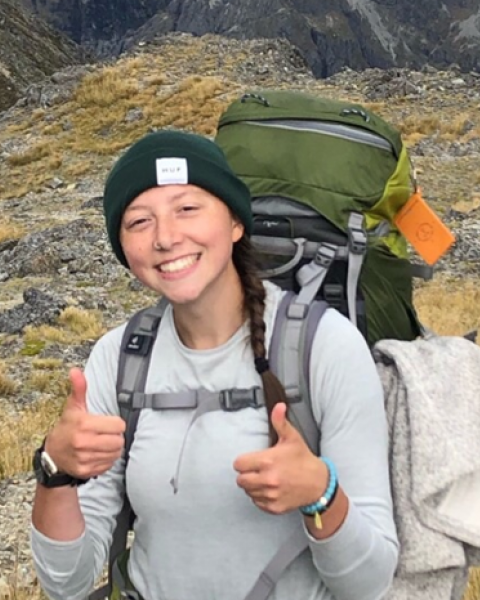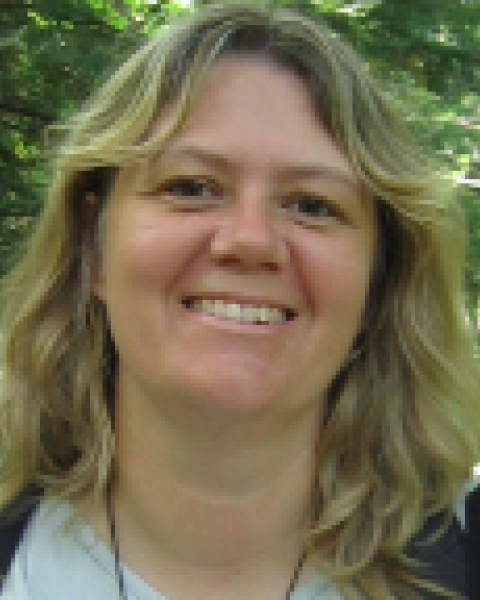Marking a Timber Sale

Welcome Back Cooperative Extention Colleges and Friends,
It's County Farm Woodlot Intern Brooke Gauthier with more information of my third project of the summer. My last blog post "What are Skid Trails?" focused soley on laying out skid trails for a timber sale located off of Water Village Road in Ossipee, New Hampshire. This post talks about the next step of that timber sale—marking the trees to be harvested.
The Woodlot
For this harvest, I am working in a 35-acre stand composed mostly of white pine with some mixed hardwoods. This stand is located at the top of the a hill with a poorly maintained road, making the stand hard to acess. Due to the hard accessability, the stand has not been managed and is now overstocked, meaning all growing space is taken.
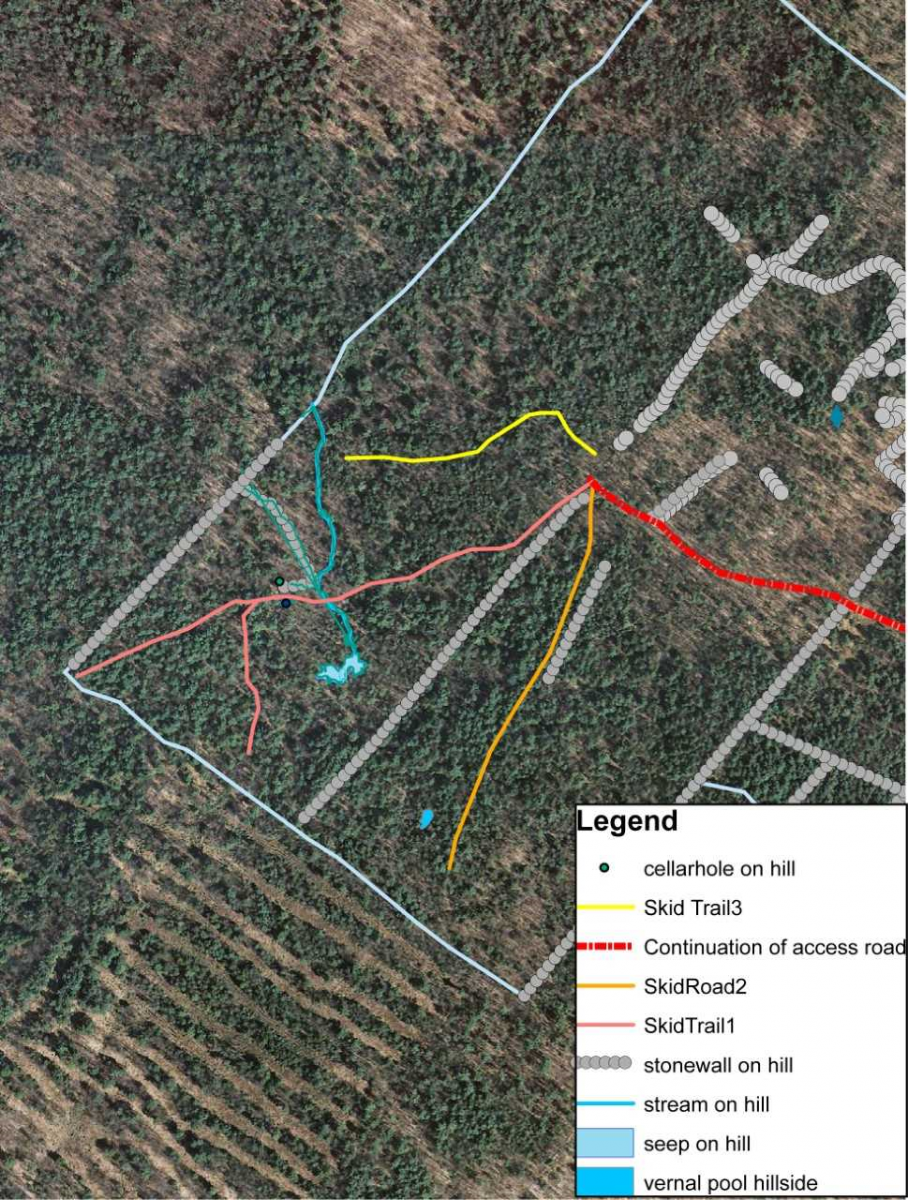
An aerial photo of the 35-acre forested stand.
Why manage for white pine?
White pine use in New England has a rich history and is well-known for being used for ship masts. The historical use of white pine for shipbuilding is evidenced by the presence of Mast Roads in many New England towns. White pine is still economically important and accounts for abut 20 percent of the cubic volume of timber in New Hampshire.
White pine provides important food for birds and small mammals. Seeds in the pine cones are food for squirrels, chipmunks and birds, such as the red crossbill. Bald eagles are also known to nest in the crown of dominant white pines. Young black bear cubs climb white pines.
Regenerating white pine is difficult and requires considering the soils, timing the harvest to coincide with a seed year, mixing the topsoil by logging (scarifying) to create a good seedbed, and using good silviculture to get the right mix of sun and shade on the ground.
Managing for white pine will prevent New Hampshire from losing white pine which is what Wendy Scribner plans to do with her harvest. It is projected to be a shelterwood harvest, removing the hardwood understory and one-third of the pine overstory. By removing these trees, it provides more growing space for the white pines in the understory and allows for pine regeneration. Wendy also plans to leave a few spruce in the overstory for seed to promote spruce regeneration.
Prep Work
Before marking, we set up the paint guns and tally cards. The trigger-part of the gun (which is very blue due to useage) is loaded onto the paint canister and securely twisted onto the can. In order to get paint out the trigger is squeezed, releasing the bright blue paint.
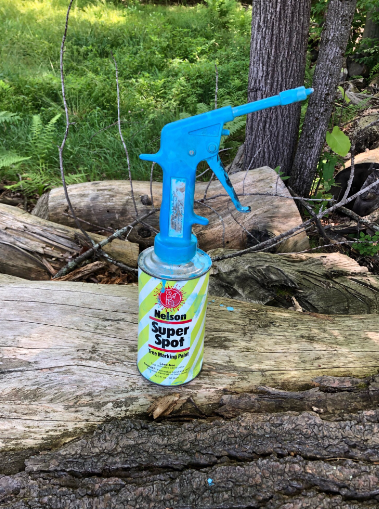
A picture of a paint gun loaded into a paint canister.
For our harvest, we created tally cards for the different tree species and products—sawtimber, pallet log, or pulpwood. The diameter of each marked tree is measured and the number of logs estimated—a log is a 16-foot length. For sawlogs and pallet logs, the length is recorded as half logs, namely 0.5 logs, 1.0 logs, 1.5 logs, etc. Based on the diameter and the number of logs, a mark is made on the tally card for each tree on the appropriate tally card (namely species and product). For pulpwood, the diameter of the tree is measured and the height in feet to a 4-inch top is estimated. For pulp, height is put into categories of 10—20 feet, 30 feet, 40 feet, etc.
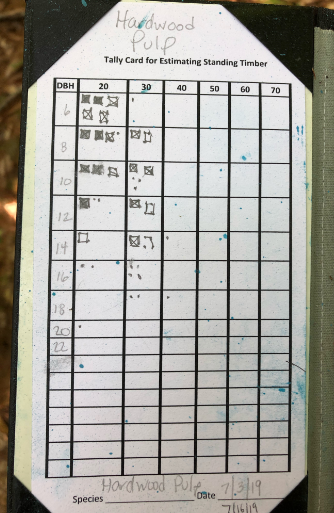
This tally card shows marks for hardwood pulp. On the left side of the card is diameter (DBH—means diameter at breast height or the diameter measured at 4 ½ feet above the ground). Across the top of the card is total merchantable height (20 feet, 30 feet, etc.) measured up to a 4-inch top. Each mark represents one tree and each blacked-in square marks 10 trees.
Marking Trees
Marking trees can be difficult because the silviculture must be balanced with the practicality of cutting and removing trees from the stand. Marked trees must be visable from the skid road, allowing loggers to see what they are to cut.
Marks on the tree tell the logger to cut the tree and indicate what the forester wants the tree to be used for—sawlog, pallet log or pulp. For example, a slash means sawtimber, a straight line means pulpwood and a P means pallet log. Foresters can use different marking symbols (here is an example of different tree markings). All marked trees also get a blue dot on the bottom of the bole. This stump mark is below where a logger would cut the tree. Once the harvest is done, the forester can go back to the site, look at the stumps and see that logger only cut trees that were marked.
In our timber sale, only trees that are to be harvested get marked with paint. Sometimes trees that are being left get marked and it is obviously important to know which marking system is in use! To begin marking trees, Wendy and I went to the back right corner of the stand, starting where the boundaries stone walls converge.

Here is a red maple that is marked with a straight line to indicate pulpwood and has a blue dot on the bottom of the bole, below where a logger cuts the tree for a sawlog.
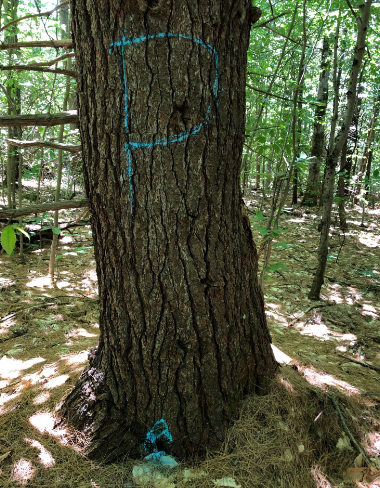
Here is a white pine marked with a P to indicate it should be cut as a pallet log.
Future Plans
Wendy hopes to have a 15-year cutting cycle, taking the dominant trees out in the next harvest. Leaving some trees in the overstory will allow individuals to gain volume for the next harvest. She also plans to perform a regeneration survey some time after the harvest to determine how well white pine seedlings are establishing and whether or not the stand needs more management to help white pine dominate the area.
